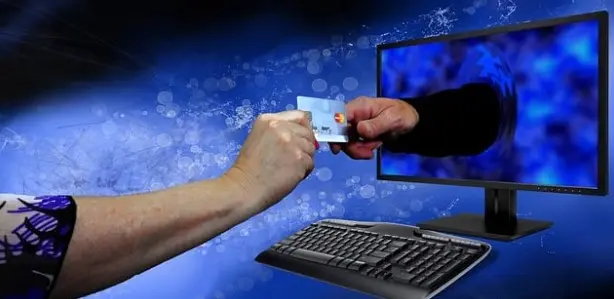In today’s digital age, the protection of personal information has become more important than ever. Personal data is a valuable commodity and is targeted by hackers and other cybercriminals. As such, companies and individuals must take the necessary steps to safeguard personally identifiable information (PII). In this comprehensive guide, you will discover the best security methods for protecting PII and keeping your data safe.

Understanding PII: What It Is and Why It Matters
Before delving into specific security methods, it is essential to understand what PII is and its importance. PII is any data that can be used to identify an individual. This can include a person’s name, address, email address, phone number, social security number, and more. Personal information is valuable and can be used for a variety of malicious purposes, such as identity theft, financial fraud, and even cyberstalking. As such, protecting this information is critical for both individuals and businesses.
Defining Personally Identifiable Information (PII)
PII refers to any information that can be used to identify an individual. This includes but is not limited to, name, date of birth, social security number, address, phone number, email address, and financial account numbers. Any information that can be used to identify an individual can be considered PII and must be treated with the utmost care to prevent it from falling into the wrong hands.
It is essential to recognize that not all PII is created equal. Some information, such as a person’s name or email address, may not be particularly sensitive on its own. However, when combined with other pieces of information, such as a social security number or financial account number, it can become much more valuable to cybercriminals.
The Importance of Protecting PII
Protecting PII is a crucial responsibility for both individuals and organizations. The unauthorized disclosure or misuse of PII can have severe consequences, including identity theft, financial loss, and damage to a person’s reputation. Businesses that fail to adequately protect PII can face legal and regulatory fines and risk damage to their reputation and loss of customer trust. As such, it is essential to take the necessary steps to protect this valuable information.
One important step in protecting PII is to limit access to the information. For example, businesses should only collect and store the minimum amount of PII necessary for their operations. They should also limit access to the information to only those employees who need it to perform their job duties. Additionally, businesses should implement security measures, such as encryption and secure storage, to protect the information from unauthorized access.
Legal and Regulatory Requirements for PII Protection
There are many legal and regulatory requirements for PII protection, depending on the type of data and its intended use. For example, the General Data Protection Regulation (GDPR) in the European Union lays out strict requirements for the protection of personal data. In the United States, various state-level regulations dictate how companies must handle personal data. Additionally, various industry-specific regulations, such as HIPAA in healthcare or PCI DSS in finance, have their own specific requirements for PII protection. It is crucial to understand these regulations and ensure that your organization is in compliance to avoid legal and financial penalties.
Compliance with these regulations can be a complex and ongoing process. It may involve conducting regular risk assessments, implementing security controls, and providing employee training on data protection best practices. However, the consequences of noncompliance can be severe, making it essential to prioritize PII protection and compliance efforts.

Assessing Your PII Risk Exposure
Before implementing any security methods, it is essential to assess your PII risk exposure. This involves identifying the personal information that your organization collects, processes, and stores, as well as identifying potential threats and vulnerabilities that could compromise this information.
Identifying PII in Your Organization
The first step in assessing your PII risk exposure is to identify the personal information that your organization handles. This can include information collected from customers, employees, or other individuals. This information can be stored in various forms, such as paper documents, electronic files, or databases.
It is important to note that PII can also include sensitive information such as medical records, financial information, and login credentials. By identifying the types of PII that your organization handles, you can begin to assess the risk associated with each type of information.
Evaluating Your Current PII Security Measures
Next, you should evaluate your current PII security measures. This includes assessing the effectiveness of your access controls, encryption methods, and other security measures. Access controls can include password protection, multi-factor authentication, and restricting access to certain individuals or departments.
Encryption is a method of converting information into a code to prevent unauthorized access. This can include encrypting files, emails, and other forms of communication. It is important to regularly evaluate your encryption methods to ensure that they are up-to-date and effective.
Other security measures can include firewalls, anti-virus software, and intrusion detection systems. It is important to identify any weaknesses in your current security measures and take steps to address these vulnerabilities.
Recognizing Potential Threats and Vulnerabilities
Finally, it is crucial to recognize potential threats and vulnerabilities that could compromise your organization’s PII. This can include external threats, such as hackers or cybercriminals, as well as internal threats, such as employee negligence. External threats can include phishing scams, malware attacks, and social engineering tactics. It is important to regularly train employees on how to recognize and prevent these types of attacks.
Internal threats can include employee errors, such as accidentally sending sensitive information to the wrong person, or intentional actions, such as stealing PII for personal gain. It is important to have policies and procedures in place to prevent and detect these types of threats.
By identifying potential threats and vulnerabilities, you can take the necessary steps to mitigate these risks and protect your organization’s PII. This can include implementing additional security measures, regularly training employees, and conducting regular security audits.
Implementing Strong Access Controls
Access controls are an essential component of any PII security strategy. By implementing strong access controls, you can ensure that only authorized individuals have access to sensitive information. However, implementing access controls is not enough. You need to ensure that the access controls you implement are effective and reliable. Here are some ways to strengthen your access controls:
Role-Based Access Control (RBAC)
One effective access control method is role-based access control (RBAC). RBAC involves assigning specific roles to individuals within an organization and granting access to data based on those roles. This ensures that individuals only have access to the information that they need to perform their job duties. By limiting access to sensitive information, RBAC can help prevent data breaches and unauthorized access to PII.
RBAC is particularly useful for larger organizations with many employees and different departments. By assigning roles to employees, you can ensure that each department has access to the information they need and that sensitive information is not accessible to unauthorized individuals.
Multi-Factor Authentication (MFA)
Another effective access control method is multi-factor authentication (MFA). MFA involves requiring individuals to provide more than one form of identification to access sensitive information. This can include something the user knows (like a password), something the user has (like a hardware token), or something the user is (like a fingerprint scan). Implementing MFA can significantly increase the security of your access controls. Even if an unauthorized individual obtains a password, they will not be able to access the sensitive information without the additional factor of authentication. This can help prevent data breaches and unauthorized access to PII.
Regularly Reviewing and Updating Access Permissions
Finally, it is crucial to regularly review and update access permissions to ensure that individuals only have access to the information that they need. This can help prevent unauthorized access to sensitive information and reduce the risk of security breaches. It is important to review access permissions when employees join or leave the organization when employees change roles within the organization, and on a regular basis to ensure that access controls remain effective.
Regularly reviewing and updating access permissions can also help you identify any vulnerabilities in your access controls. For example, if an employee has access to information that they no longer need, this could be a sign that your access controls are not effective. By identifying and addressing these vulnerabilities, you can strengthen your access controls and reduce the risk of data breaches and unauthorized access to PII.
Encrypting PII Data
Encryption is another critical component of any PII security strategy. Encryption involves converting sensitive information into an unreadable format, making it inaccessible to unauthorized individuals.
Understanding Encryption Basics
Encryption is the process of converting sensitive information into an unreadable format. This involves the use of complex algorithms that turn plaintext into ciphertext. Only individuals with the proper decryption key can unlock the encrypted data.
Choosing the Right Encryption Method for Your Needs
Choosing the right encryption method for your needs is crucial. There are many different types of encryption, each with its strengths and weaknesses. For example, symmetric encryption uses the same key for encryption and decryption, while asymmetric encryption uses different keys for encryption and decryption. It is important to understand these different methods and choose the one that best fits your organization’s needs.
Ensuring Proper Key Management
Finally, it is essential to ensure proper key management when implementing encryption. This involves securely storing and managing encryption keys to prevent unauthorized access to sensitive information. Without proper key management, encryption can be rendered useless, allowing unauthorized individuals to gain access to encrypted data.
Conclusion
Protecting PII is critical for both individuals and organizations. By taking the necessary steps to safeguard sensitive information, you can reduce the risk of identity theft, financial fraud, and other malicious activities. Organizations must assess their risk exposure to protect PII effectively and implement strong access controls and encryption methods like the security practices outlined in this guide. PPGS ™ has developed a privacy policy grading system that evaluates data security to ensure that your company provides its customers with a safe online experience. Contact PPGS ™ today to learn more.
